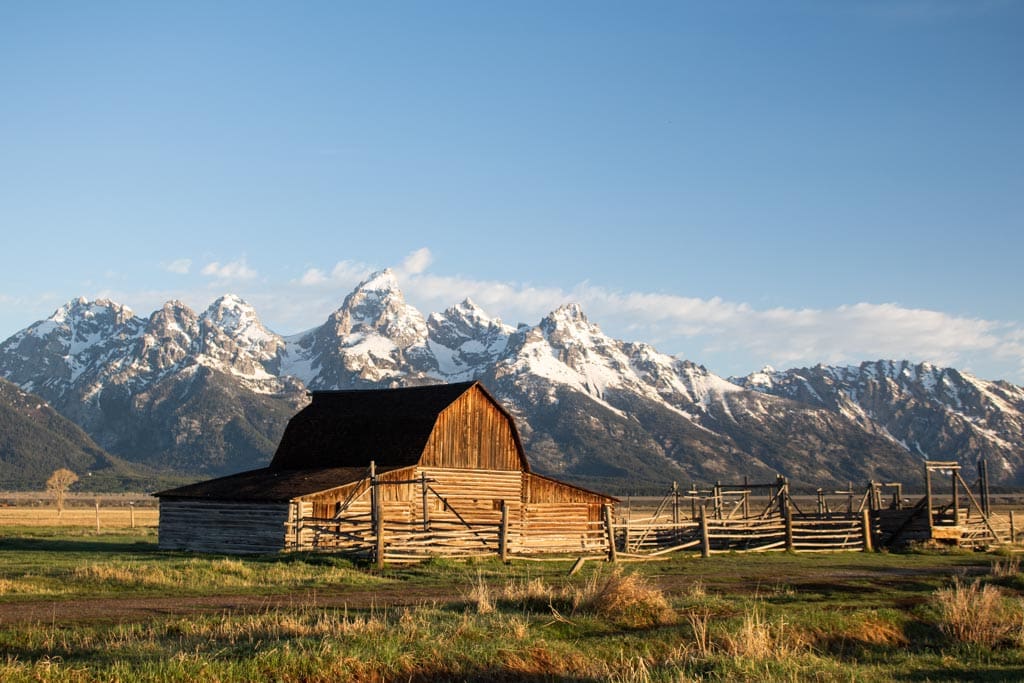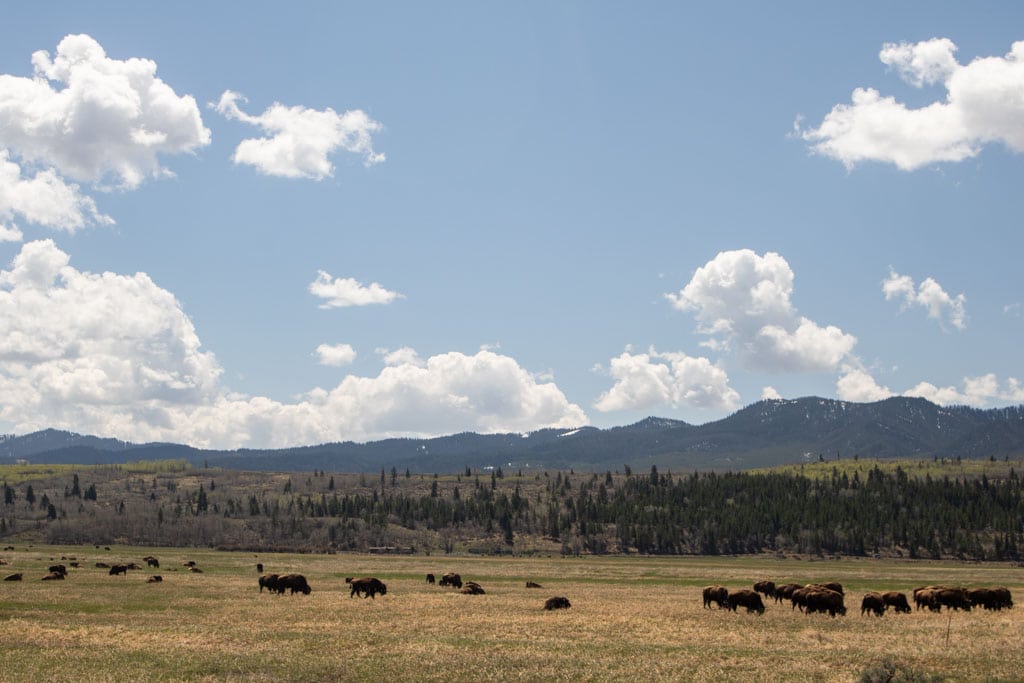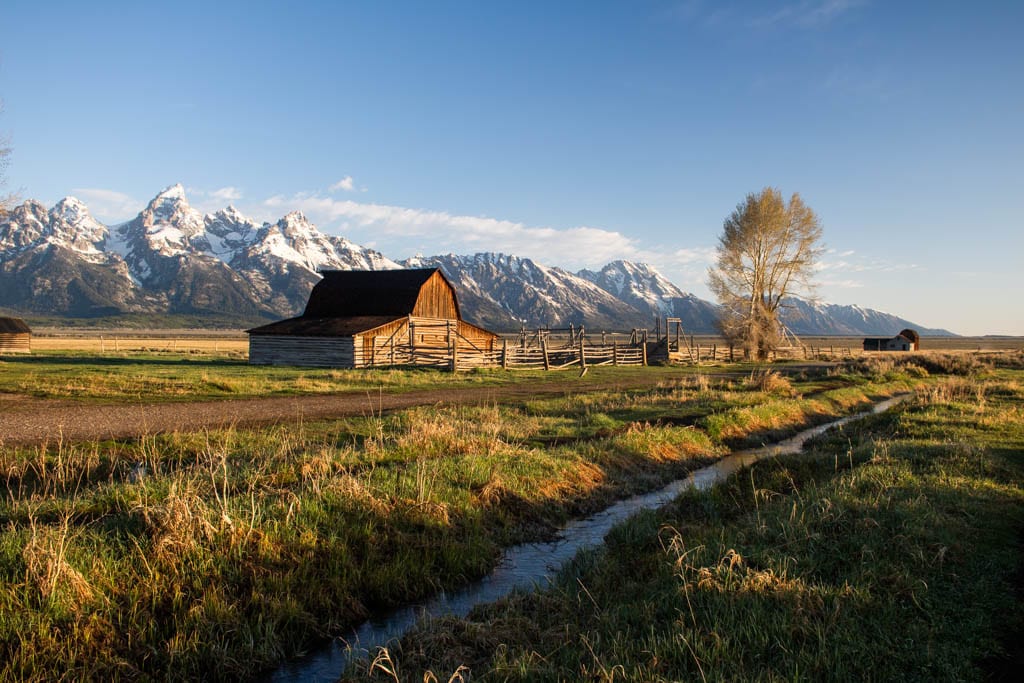Nestled below the towering peaks of the Teton Range, a cluster of rustic wooden barns and weathered homesteads stands as a quiet testament to the determination of early settlers. This is Mormon Row, one of the most iconic and photographed sites in Grand Teton National Park.
With its breathtaking backdrop, rich history, and enduring charm, Mormon Row offers visitors a unique blend of natural beauty and cultural heritage.
🏚️ A Walk Through Time
Located in the southeastern corner of the park near Antelope Flats, Mormon Row is the remains of a once-thriving community of Mormon homesteaders who settled the area in the late 1890s.
Drawn by the promise of fertile land and open space, families from Idaho’s Snake River Valley established modest farms here, building homes, barns, and irrigation systems to tame the arid plains.
Today, the preserved structures—including the famous T.A. Moulton Barn and John Moulton Barn—serve as vivid reminders of a bygone era. These humble buildings, with their dramatic alpine backdrop, have become symbols of the American West and are now some of the most photographed barns in the world.

🏔️ How to Get There
Mormon Row is easily accessible from Moose Junction, just a short drive from Jackson, Wyoming. From Moose Junction, head north on Highway 89/191 and turn right onto Antelope Flats Road (usually open from late spring to fall, depending on snow conditions). The road leads directly to the historic district, where you’ll find parking areas and interpretive signs.
For photographers and early risers, arriving at sunrise is a must. The first light of day paints the Tetons in shades of pink and gold, creating an unforgettable scene behind the old wooden barns.
📸 What to See and Do
1. Explore the Homesteads
While the Moulton barns are the main attraction, take time to walk the dirt road and explore the other homesteads that dot the area.
The remnants of root cellars, chicken coops, and windmills offer a fascinating glimpse into the daily lives of the settlers. The John Moulton Homestead, with its stucco house and preserved outbuildings, gives a particularly detailed look at early 20th-century ranch life.
2. Capture Iconic Photos
Whether you’re a professional photographer or a casual traveler with a smartphone, Mormon Row is a dream location. The contrast between the weathered wood of the barns and the jagged peaks of the Tetons creates an image that’s both dramatic and serene.
Sunrise and sunset provide the best lighting, but dramatic clouds, snow, or summer wildflowers can make for incredible shots any time of day.
3. Watch for Wildlife
The open sagebrush flats around Mormon Row are prime habitat for lots of wildlife, particuarly bison, pronghorn antelope, moose, and coyotes.
It’s not uncommon to spot a herd of bison grazing near the barns—an unforgettable sight, especially against the backdrop of the Tetons. Bring binoculars and keep a respectful distance, especially during spring calving and fall rut seasons.

🧭 Tips for Visiting
- Visit Early or Late: Midday can be crowded, especially in summer. Early morning offers the best light and fewer people.
- Pack Smart: Bring water, sun protection, and sturdy shoes—paths are uneven and dusty.
- Respect the Area: These are historic structures; climbing or entering buildings is prohibited to preserve them.
- Check Road Conditions: Antelope Flats Road is gravel and may be closed in winter or muddy in spring.
- Use a Telephoto Lens: If photographing wildlife, a long lens allows you to maintain a safe distance.
🌤️ When to Go
Mormon Row is best visited between late May and October, when Antelope Flats Road is typically open, and the weather is pleasant. Summer brings lush grasses and wildflowers, while fall adds golden hues and wildlife activity. Winter visits are still possible, but access is more limited, often requiring cross-country skis or snowshoes.

🦌 Nearby Attractions
Make a full day out of your visit by exploring other nearby sights:
- Blacktail Ponds Overlook: A beautiful viewpoint overlooking the park’s natural communities, including ponds, wet meadows, woodlands, and the Teton Range in the background.
- Schwabacher Landing: A peaceful spot along the Snake River, perfect for sunrise photos.
- Snake River Overlook: Made famous by Ansel Adams, this viewpoint captures the river winding beneath the Tetons.
- Moose-Wilson Road: A scenic drive offering excellent wildlife viewing opportunities.
- Grand Teton Visitor Center (Craig Thomas Discovery Center): Located just south of Mormon Row in Moose, with exhibits, maps, and park info.
🌄 A Place Where Time Stands Still
Mormon Row isn’t just a photo op—it’s a living story. A place where nature and history intertwine, where the rugged spirit of the American West is preserved in weathered wood and sweeping landscapes.
Whether you’re drawn by the history, the solitude, or the chance to capture the perfect shot, a visit to Mormon Row is a must-do on any Grand Teton National Park itinerary.
